This User Guide is designed to walk you through several different data import types to facilitate a more pleasant experience of importing data into Decision Lens.
Importing Projects & Field Data
If you have no Portfolio Data:
- Click on the portfolio in your homepage and it will open to the ‘My Plans Summary’ page.
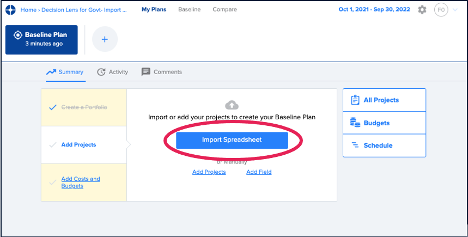
- Click on “Import Spreadsheet” button
- Then move ahead to Step 6.
If you already have Portfolio Data:
- Navigate to the ‘Projects’ page in Decision Lens. Click the (…) and select the ‘Import’ option as highlighted below.
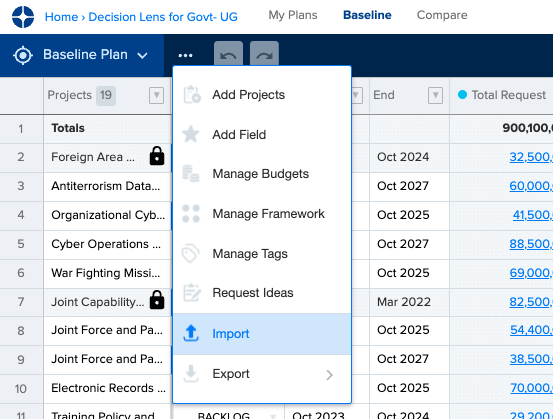
- Download our ‘Import Template’ for tips and tricks on configuring your data in Excel before importing.
- After your data is configured in Excel, select the ‘Projects and Field Data’ option, then click ‘Next.’
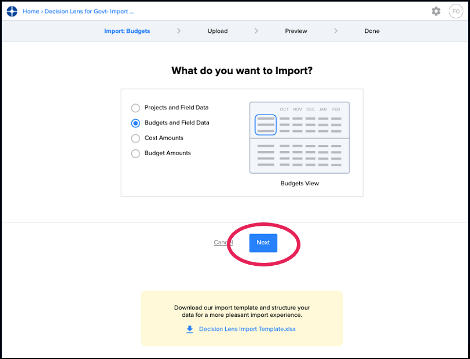
- Now add an ‘.xls’ file.
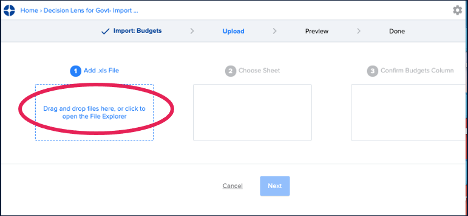
- Choose a sheet from your workbook using the dropdown menu.
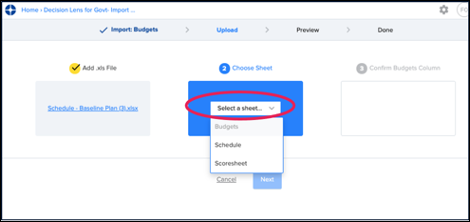
- Confirm which column holds your Project’s name and click ‘Next.’
- Decision Lens will share an ‘Import Preview.’ Review it for accuracy, then select ‘Start Import.’
- Your ‘Projects & Field’ import is now complete. Click on ‘Review VCRB Field Types’ or ‘Continue Importing’ link if you have additional data to import into your portfolio.
Importing Budgets & Field Data
If you have no Portfolio Data:
- Click on the ‘Portfolio’ in your homepage and it will open the ‘My Plans Summary’ page. It will look like the figure below.
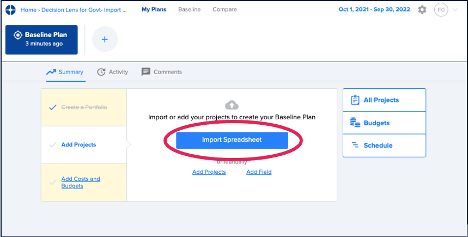
- Click ‘Import Spreadsheet.’
- Then move ahead to Step 3 in the next section.
If you already have Portfolio Data:
- Navigate to the ‘Projects’ page in Decision Lens. Click the (…) and select the ‘Import’ option as highlighted below.
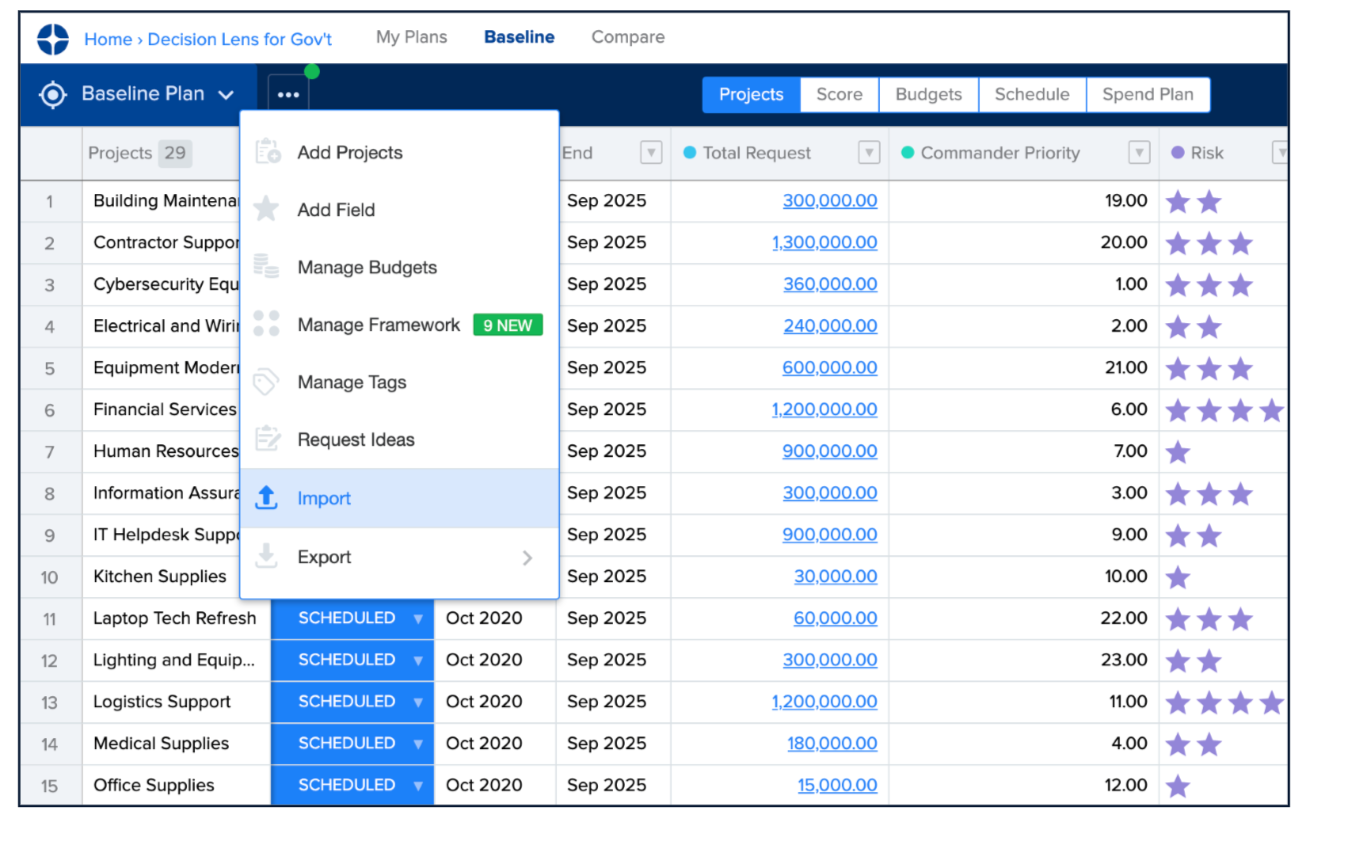
- After your data is configured in Excel, select the ‘Budgets and Field Data’ option, then click ‘Next’.

- Now add an ‘.xls’ file.

- Then choose a sheet from your workbook using the dropdown.

- Confirm which column is your ‘Budgets Name Column.’
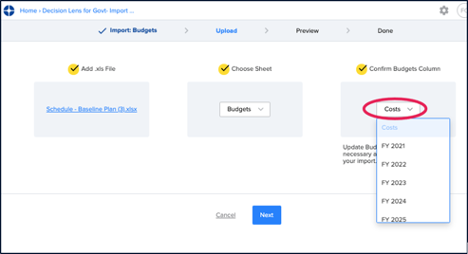
- Click ‘Next.’
- Decision Lens will share an ‘Import Preview.’ Review it for accuracy, then select ‘Start Import.’
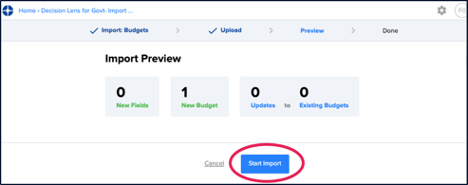
- Your ‘Budgets & Field’ import is now complete. Click on ‘Go to Manage Costs’ or ‘Continue Importing’ if you have additional data to import into your portfolio.
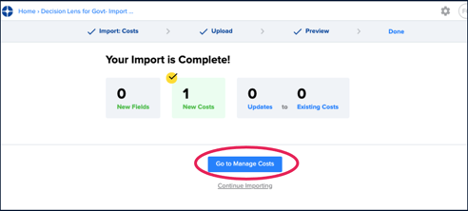
Importing Cost Amounts
If you have no Portfolio Data:
- Click on the ‘Portfolio’ in your homepage and it will open to the ‘My Plans Summary’ page.
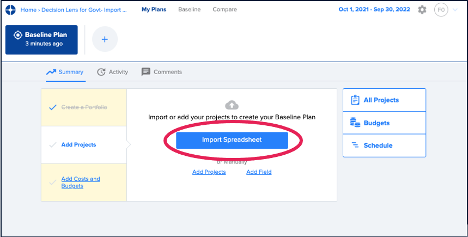
- Click on ‘Import Spreadsheet.’
- Then move ahead to Step 6.
- Navigate to the ‘Projects’ page in Decision Lens. Click the ellipses (…) and select the ‘Import’ option as highlighted.

- After your data is configured in Excel, select the ‘Cost Amounts’ option. Select from the dropdown if you are Importing “Request” or “Allocated” amounts. Then click ‘Next.’
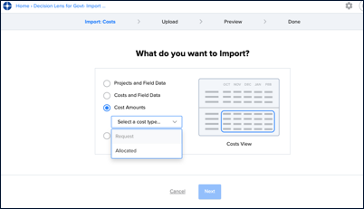
- Now add an ‘.xls’ file.
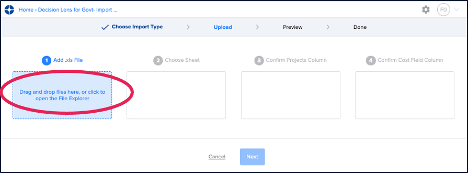
- Then choose a sheet from your workbook using the dropdown.
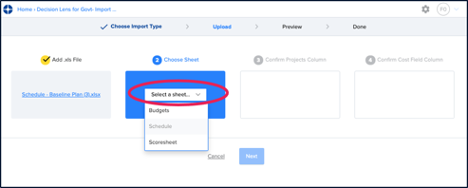
- Confirm your ‘Projects Column’ followed by your ‘Cost Field Column.’ Update the selection if necessary. Then click ‘Next.’
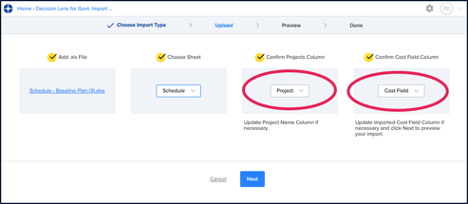
- Decision Lens will share an ‘Import Preview.’ Review it for accuracy, then select ‘Start Import.’
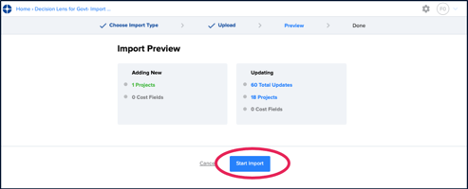
- Once your Import is complete click ‘Go to Schedule’ to review the data imported into Decision Lens or continue importing.
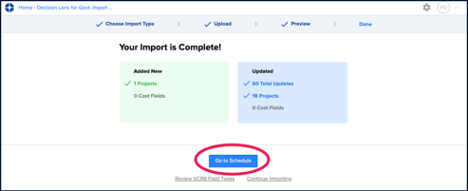
Importing Budget Amounts
If you have no Portfolio Data:
- Click on the portfolio in your homepage and it will open to the ‘My Plans Summary page.’
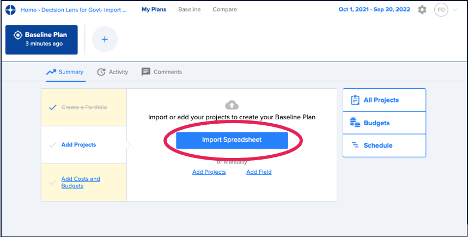
- Click on ‘Import Spreadsheet’ button.
- Then move ahead to Step 3 in the next section.
If you already have Portfolio Data:
- Navigate to the Projects page in Decision Lens. Click the ellipses(…) and select the Import option as highlighted.

- After your data is configured in Excel, select the ‘Budget Amounts’ option. Then click ‘Next.’
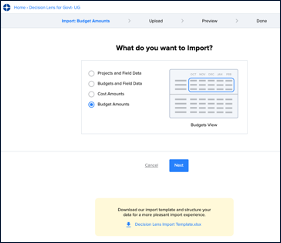
- Now add an ‘.xls’ file.
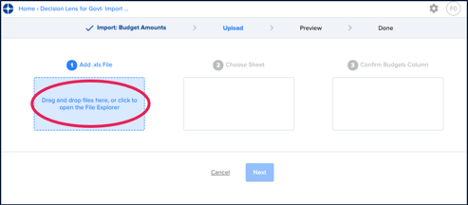
- Then choose a sheet from your workbook using the dropdown.
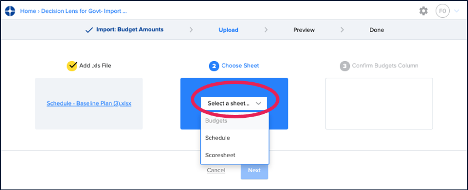
- Confirm your ‘Budgets Column.’ Then click ‘Next.’
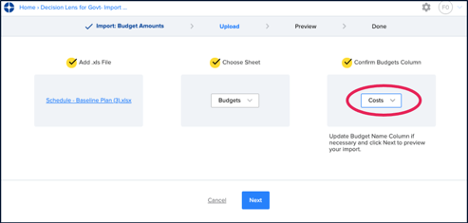
- Decision Lens will share an ‘Import Preview.’ Review it for accuracy, then select ‘Start Import.’
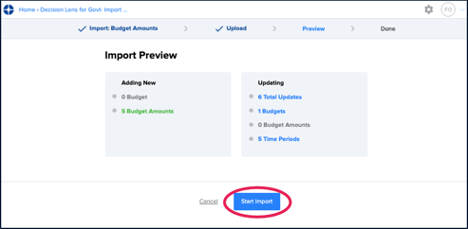
- When your Import is complete, ‘Go to Costs View’ to review the data imported into Decision Lens.
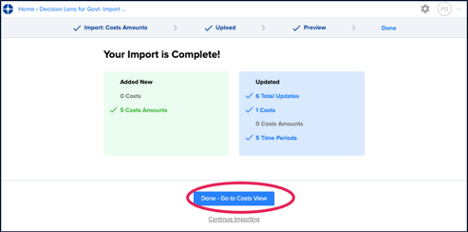
Next Steps
Now that you have learned the first automated way to bring data into Decision Lens, we recommend continuing with these other Decision Lens User guides:
Intake Engine
For turbocharged collection, organization, and prioritization of requests through our secure, customizable forms which input data into a structured model.